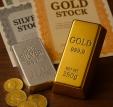‘We're still early’ - Americans have barely begun rotating into gold, silver, and the miners
NEW YORK (June 12) With gold in the midst of a multi-year rally punctuated by a series of all-time highs, and with silver and platinum now breaking out, one would think that the metals and the miners would be seeing massive investment inflows. But according to the CEOs of two of the biggest precious metals and mining ETF issuers, Americans have barely dipped their toes in the water.
Jan Van Eck, CEO of VanEck and Associates, was asked in a CNBC interview whether he’s seeing an influx of investment into the company’s gold ETFs.
“The short answer is no,” he said. “I think we're very early innings in this trade. We started pounding the table in 2023 on bitcoin and gold. That was a long time ago, and at much lower prices. But even last year, you saw outflows out of gold bullion ETFs in the United States, and what we've seen with our gold mining ETFs this year is outflows.”
“That, to me, isn't money leaving the trade and taking profits,” Van Eck explained. “It's rather people that were short those ETFs covering their trades, and so the banks have to take money out. But we haven't seen a lot of money coming in, and when we do investor polls and client meetings, they barely know that gold has hit all-time highs.”
“I think a lot of this investor demand has come internationally, from foreign central banks, people that are nervous, frankly, about the Trump tariff policy, that's been a big boon to gold,” he added. “But I think in terms of Americans wanting this in their portfolios, really the risk they would be hedging is our big deficit issues and debt issues […] I think that demand is yet to come, and it's relatively well behaved, so I think we’ve got a long ways to go.”
Sprott Asset Management CEO John Ciampaglia was then asked whether the United States’ balance sheet was pushing longer-term investors into the precious metals space.
“We like to think of gold as the original alternative asset, and it's obviously been a store of value and wealth for millennia, so it is time-tested and proven,” he said, noting that Sprott manages tens of billions of dollars of precious metals. “Last year was a really unusual year where gold went up over 25%, and we're already at that mark year-to-date,” he said “So what is the signal that gold is flashing, going up well [above] long-term trend? People are starting to reallocate to gold.”
Ciampaglia cautioned, however, that even with gold’s standout performance in back-to-back years, only a small number of investors have actually bought in. Instead, it’s sovereign purchases that have been the main driver.
“What we've seen the last three years is central banks being big buyers of physical gold,” he said. “This is part of a de-dollarization strategy that China is really driving. This is about diversifying away some of the FX risks in their portfolio and reducing exposure to U.S. dollars and treasuries.”
“The other phenomenon that's happening this year that I think investors need to take note of, is gold is up about 26% for the year, yet U.S. Treasuries are kind of meandering around and it's not really providing the same safe haven experience or behavior that treasuries and the U.S. dollar have traditionally played during previous periods of uncertainty or risk,” he added. “You have the U.S. dollar down 9%, the DXY index, which is very unusual in a financial calamity because usually ‘king dollar’ reigns.”
Ciampaglia sees this as part of the larger global landscape dominated by tariffs, trade wars, and deteriorating global relationships.
“Whether you're trying to hedge interest rate risk, default risk, currency risk, equity risk, gold has proven itself to be very effective,” he said. “Our Sprott Physical Gold Trust, we've seen well over a billion dollars of net inflows, so while investors are not allocating to the equities yet, in the mining sector, to the same degree, we are definitely getting flows in the physical side. And more recently, our silver trust has also brought in about half a billion dollars.”
“We're starting to see investors gravitating to silver, and more recently platinum,” Ciampaglia said. “As gold has become very expensive, you're seeing some rotation and substitution by investors that are looking for better value in those two white metals.”
And while precious metals and the miners are not nearly as crowded as one would expect given their price performance and long history, Van Eck noted that a more recent safe haven has leapfrogged gold in terms of investor interest.
“We’ve got to bring up digital gold,” he said. “Interesting factoid for you, another money manager did a study. 37 million Americans own exposure to gold. Guess how many own exposure to Bitcoin? 50 million Americans. That makes a lot of sense to me because I think people look at both as a store of value, and over the last couple of years, a lot of the hot money – because of the appreciation – has gone into Bitcoin.”
Van Eck said that he still believes gold will have its day. “I think we're still early,” he said. “We're seeing inflows into our gold bullion fund as well.”
KitcoNews










